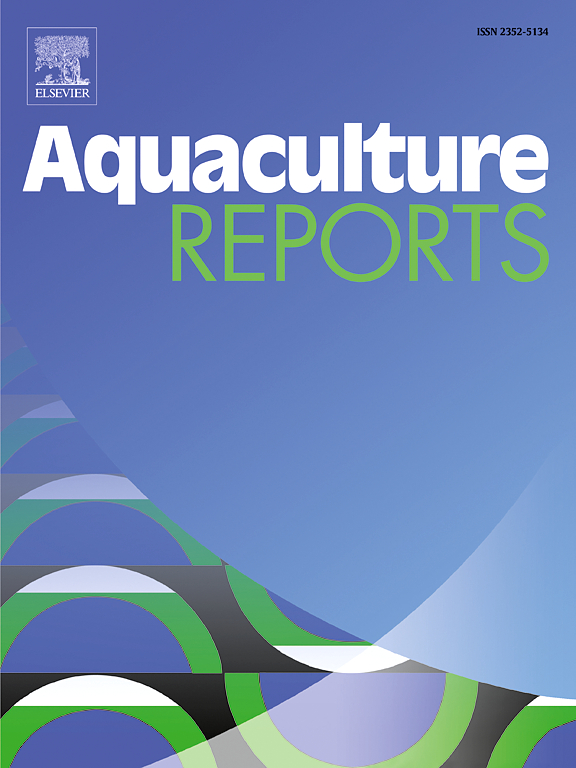Establishment of the first marine mollusk cell line from scallop (Chlamys farreri) trochophore
IF 3.2
2区 农林科学
Q1 FISHERIES
引用次数: 0
Abstract
Cell lines are indispensable tools in biological studies. Decades of attempts have failed to establish a cell line in marine mollusks, which contribute to 70 % of the mariculture production in China. In the present study, FBS, scallop serum, scallop ovarian extracts, and FeCl3 were added to the L-15 basic medium to develop an optimized culture medium (L15-CFIIIFe) for culturing trochophore larval cells of Chlamys farreri, an important mariculture scallop in China. C. farreri trochophore larval (CfT) cells exhibited proliferative activity, and a CfT cell line was successfully established, which was passaged for 155 generations in vitro. The origin of the CfT cell line was verified as C. farreri using internal transcribed spacer (ITS) and 18 s rRNA gene amplification, genomic in situ hybridization (GISH), and karyotype analysis. The CfT cell line was a mixture of cells of three sizes (5–7, 9–12, and 18–22 μm), with a population doubling time of 75.6 h. Immunofluorescence detection of KLF4, c-MYC, MYOSIN, and 5-HT indicated that CfT cells may possess a certain degree of pluripotency. Four gene transfer methods were tested in the CfT cell line; however, the transfer efficiency (0.5 %-1 %) requires further optimization. We successfully established the first marine mollusk cell line, providing a valuable cellular tool for mollusk studies.
求助全文
约1分钟内获得全文
求助全文
来源期刊

Aquaculture Reports
Agricultural and Biological Sciences-Animal Science and Zoology
CiteScore
5.90
自引率
8.10%
发文量
469
审稿时长
77 days
期刊介绍:
Aquaculture Reports will publish original research papers and reviews documenting outstanding science with a regional context and focus, answering the need for high quality information on novel species, systems and regions in emerging areas of aquaculture research and development, such as integrated multi-trophic aquaculture, urban aquaculture, ornamental, unfed aquaculture, offshore aquaculture and others. Papers having industry research as priority and encompassing product development research or current industry practice are encouraged.
 求助内容:
求助内容: 应助结果提醒方式:
应助结果提醒方式:


